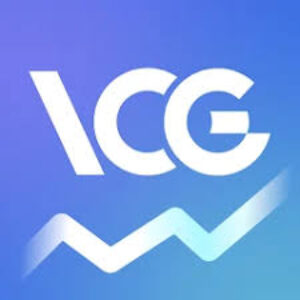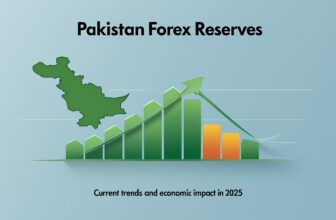
Introduction
Forex trading can feel like navigating through a vast ocean of ever-changing waves. Imagine a seasoned sailor, attuned to each shift in wind and water. Like this sailor, successful forex traders rely on their tools to anticipate shifts in the forex market. The art and science behind their strategies are called forex technical analysis—the key to interpreting price patterns, trends, and turning points.
This article will guide you through the essential technical analysis tools forex traders use to make informed decisions. Whether you’re a beginner or an experienced trader, this guide is designed to equip you with knowledge on everything from basic concepts to advanced indicators. We’ll cover practical tools, popular strategies, and even delve into the difference between technical vs. fundamental analysis in forex to give you a well-rounded understanding.
What is Technical Analysis in Forex?
Technical analysis in forex involves studying historical price data to predict future movements in currency values. Think of it like reading footprints in the sand: traders analyze patterns left behind by price movements to understand where the market might go next. Unlike fundamental analysis, which focuses on economic and political events, technical analysis centers solely on price data, chart patterns, and trading indicators.
With an array of strategies, tools, and software, technical analysis is essential for traders who want to maximize profit while minimizing risk. Forex technical analysis offers a structured approach to the market that, when used correctly, can reveal hidden opportunities.
Essential Tools for Forex Technical Analysis
In the world of technical analysis for forex, certain tools are foundational. Here, we introduce the most popular ones that help traders decode price trends, understand market sentiment, and determine potential entry and exit points.

1. Charting Software and Platforms
Having high-quality charting software is a necessity for any serious trader. Software such as MetaTrader 4 or TradingView provides access to live data, a variety of indicators, and customization options that make analysis more intuitive. These platforms allow users to overlay multiple indicators and chart patterns, helping traders gain clearer insights into market behavior.
For traders on a budget, free forex technical analysis tools like Investing.com provide basic charting functions, making them ideal for beginners. Look for platforms that support customizable indicators and time frames, so your analysis can adapt to various trading strategies.
2. Moving Averages (MA)
A staple in forex technical analysis strategies, moving averages help traders smooth out price data to identify trends. There are two main types: the Simple Moving Average (SMA), which calculates the average of a selected range, and the Exponential Moving Average (EMA), which gives more weight to recent prices. Moving averages are commonly paired with other indicators for a comprehensive view of trends.
3. Relative Strength Index (RSI)
The RSI measures the speed and change of price movements, helping traders understand whether a currency pair is overbought or oversold. This is a key tool in technical forex analysis, often used in combination with moving averages to confirm trends. For example, an RSI above 70 signals an overbought market, while below 30 indicates oversold conditions.
4. Bollinger Bands
Bollinger Bands consist of a moving average line with two bands plotted above and below it. These bands adjust dynamically based on market volatility, indicating potential reversals. When prices approach the bands’ outer edges, it signals potential overbought or oversold conditions. Bollinger Bands are particularly effective in a forex technical analysis strategy focusing on price reversals.
5. Fibonacci Retracement Levels
The Fibonacci retracement tool helps traders identify potential support and resistance levels based on mathematical ratios. Traders use it to spot reversal zones where prices might bounce back. Often combined with other indicators, Fibonacci retracement levels are widely used in technical analysis forex trading patterns to help predict where trends might stall or reverse.
6. MACD (Moving Average Convergence Divergence)
The MACD indicator highlights trend changes and momentum by comparing two moving averages. It’s a favorite in the best technical analysis for forex arsenal because it effectively combines trend and momentum indicators, helping traders pinpoint trend reversals and assess strength.
7. Candlestick Patterns
Understanding candlestick patterns is essential for forex traders, as they provide visual cues about market sentiment. Patterns like the doji, hammer, or engulfing indicate possible reversals or continuations. Combining candlestick analysis with other tools such as RSI or MACD can give a more rounded insight into market moves.
Top Strategies for Forex Technical Analysis
To apply these tools effectively, it’s crucial to understand the forex technical analysis strategies that guide traders’ decisions. Here’s a look at a few foundational techniques.

1. Trend Following Strategy
A straightforward approach, trend-following involves identifying and riding the market trend. Tools like moving averages and the MACD help traders stay aligned with the market direction. This strategy minimizes guesswork, allowing traders to profit from prolonged trends in the forex market.
2. Breakout Strategy
Breakout trading involves entering a position when the price “breaks out” of a defined range, indicating a surge in momentum. Bollinger Bands and support/resistance lines are vital tools for spotting potential breakouts. Traders may also incorporate the best free forex charting software for technical analysis to experiment with breakout strategies.
3. Range Trading Strategy
Not all markets trend—some remain within a range. For such periods, range trading is ideal. Traders use support and resistance levels, along with RSI, to enter positions at the range’s boundaries. It’s a disciplined approach that suits calm markets and short-term trades.
4. Price Action Strategy
This method emphasizes interpreting raw price movements, or “naked chart” trading. By focusing solely on patterns and formations, traders can spot potential reversals and breakouts without relying heavily on technical indicators. Price action trading for forex is often favored by seasoned traders, as it offers insight into market psychology.
Technical vs. Fundamental Analysis in Forex
The debate of technical vs. fundamental analysis in forex often arises among traders. While technical analysis studies price action to predict future movements, fundamental analysis evaluates economic factors like interest rates, GDP, and employment reports to assess currency values.
Both methods have their merits: fundamental analysis provides context on why prices move, while technical analysis reveals where and when they might move. Many traders combine both approaches, using technical tools to time entries and fundamental data to understand broader trends.
Advanced Forex Technical Analysis Tools and Software
With technology advancing rapidly, traders now have access to AI-powered tools for a more sophisticated analysis.

- AI Technical Analysis Forex Tools: Some platforms now use AI to analyze data patterns and forecast trends. These tools can identify complex relationships within price movements that might be overlooked by human traders, making them ideal for those interested in algorithmic trading.
- Forex Technical Analysis Software: Specialized software packages offer customizable indicators, backtesting features, and live alerts, enabling traders to optimize their strategies.
- Forex Technical Analysis Courses and Books: For those looking to deepen their knowledge, a range of forex technical analysis books and online courses can provide structured learning paths. Many offer downloadable resources, like forex technical analysis pdf guides, to keep handy for quick reference.
Resources for Beginners
Starting in forex technical analysis for beginners can feel overwhelming, but many resources are designed to simplify the learning curve.
- Free Forex Technical Analysis Websites: Websites like Investing.com and TradingView offer free access to live charts and basic indicators, ideal for beginners on a budget.
- Cheat Sheet Forex Technical Analysis: Quick-reference guides or “cheat sheets” outline essential indicators, patterns, and strategies, helping new traders stay organized.
- Best Technical Analysis Books for Forex: Books offer a deep dive into concepts, often explained through examples and case studies.
Conclusion
Mastering forex technical analysis is a journey that requires practice, patience, and persistence. Like learning to sail, traders need the right tools, strategies, and a deep understanding of their craft. Whether you’re an experienced sailor on the forex waves or just beginning your journey, utilizing these analysis tools and honing your strategies can unlock new levels of confidence and success in the forex market.
















